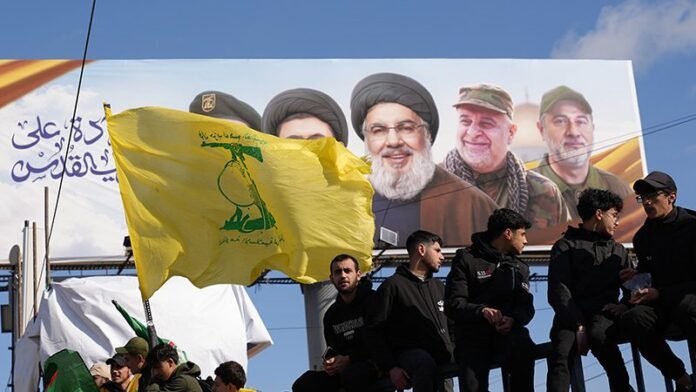The Cyber Battlefield: Israel’s Digital Warfare Against Hezbollah
In the ongoing conflict between Israel and Hezbollah, a new front has emerged that transcends traditional military engagements: cyber warfare. As Israel intensifies its military operations in Gaza, it has simultaneously launched a series of sophisticated cyber-attacks against Hezbollah, targeting the group’s communication systems and operational capabilities. These digital assaults have resulted in significant casualties among Hezbollah operatives and have decimated the group’s leadership structure, fundamentally altering the dynamics of the Israel-Hezbollah conflict.
The Fragile Ceasefire
The ceasefire established on November 27, 2024, was intended to bring an end to the hostilities that had escalated since the outbreak of violence following Hamas’s attack on Israel on October 7, 2023. However, the agreement remains tenuous, primarily due to Israel’s ongoing violations, including its failure to fully withdraw from southern Lebanon. This precarious situation does not bode well for long-term stability along the border, as Israel continues to conduct cyber operations against Hezbollah, further complicating the fragile peace.
Summer Escalation: A Catalyst for Cyber Warfare
The conflict reignited dramatically after the October 7 attack, with Hezbollah launching rockets into northern Israel in a show of solidarity with Gaza. From October 2023 to August 2024, violent incidents related to the Israel-Hezbollah conflict surged, with reports indicating between 150 to 250 incidents each week. A pivotal moment occurred on July 27, 2024, when a rocket struck a soccer field in Majdal Shams, killing 12 children. This tragedy prompted a shift in Israeli strategy, leading to more aggressive targeting of Hezbollah’s leadership through cyber operations.
Operation Grim Beeper: A Turning Point
On September 17 and 18, 2024, Israel’s Mossad executed “Operation Grim Beeper,” a cyber operation that detonated pager and radio devices used by Hezbollah across Lebanon. This operation resulted in tens of deaths and approximately 3,000 injuries among Hezbollah members, including the Iranian ambassador to Lebanon. The operation set the stage for the assassination of Hezbollah Secretary-General Hassan Nasrallah and several high-ranking officials just ten days later. By the end of September 2024, Israel had successfully eliminated seven of Hezbollah’s most senior officers, leaving the group in disarray.
The infiltration of Hezbollah’s communication systems severely hampered the group’s ability to make secure and strategic decisions. This disruption forced Hezbollah to divert resources to protect its communications, undermining its operational effectiveness and leaving its militants vulnerable to Israeli maneuvers. Israel’s innovative use of cyber warfare not only diminished Hezbollah’s immediate capabilities but also reshaped the power dynamics in the region.
Hezbollah’s Strategic Missteps
Hezbollah’s failures during the conflict have exposed vulnerabilities stemming from overconfidence and reliance on outdated military strategies. Instead of launching a major offensive in response to Israeli attacks, Nasrallah opted for a restrained approach, focusing on strengthening the group’s rocket and drone capabilities. This decision, coupled with a lack of military adaptability, left Hezbollah exposed to Israeli intelligence operations that successfully penetrated the organization.
Israel exploited Hezbollah’s involvement in the Syrian civil war and other activities outside Lebanon to gather intelligence, enlisting informants who provided critical information. This intelligence advantage allowed Israel to conduct coordinated strikes that disrupted Hezbollah’s organizational structure, dismantling the group’s long-held narrative of invincibility.
The Role of Artificial Intelligence and Unit 8200
Israel’s investment in technology has played a crucial role in its cyber warfare strategy. The integration of artificial intelligence (AI) into cyber operations has provided Israel with a significant asymmetrical advantage. AI tools have enabled Israel to identify potential breaches in its digital security and maintain a “target bank” cataloging Hezbollah operatives, their locations, and routines. This technological edge has allowed for swift and precise execution of operations that were previously unattainable.
Unit 8200, Israel’s elite intelligence unit, has been instrumental in monitoring Hezbollah’s communications and movements. By intercepting communications and employing advanced surveillance techniques, Unit 8200 has enhanced Israel’s targeting precision, allowing for effective intelligence gathering and operational planning.
Implications for Future Warfare
The cyber operations targeting Hezbollah mark a transformative shift in the nature of conflict, where technology and warfare are increasingly intertwined. As Israel continues to leverage AI and advanced cyber capabilities, the implications for regional actors are profound. Hezbollah, grappling with internal and external challenges stemming from these operations, faces an uncertain future as an influential political and military force in Lebanon and the broader Middle East.
The evolving landscape of warfare underscores the necessity for all regional actors to adapt to technological advancements. Israel’s sophisticated use of cyber warfare not only reshapes its conflict with Hezbollah but also sets significant precedents for future military engagements globally.
In conclusion, the Israel-Hezbollah conflict has entered a new era defined by cyber warfare, where traditional military strategies are increasingly supplemented—or even replaced—by digital tactics. As both sides navigate this complex battlefield, the outcomes will have lasting implications for the region and the nature of warfare itself.


